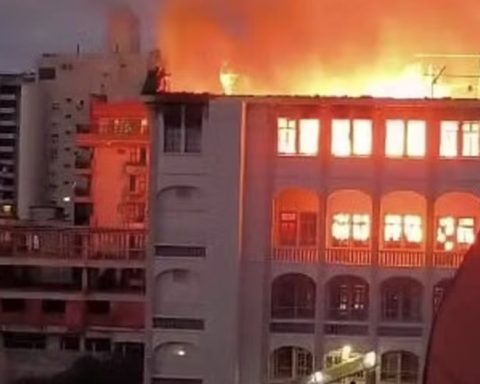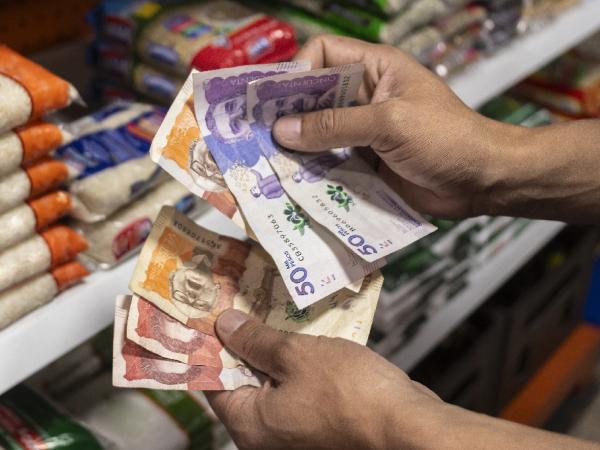On one of the several walls with predominant pink, the curator of the exhibition LGBTQIA+ Stories, at the São Paulo Museum of Art (Masp), says that, “although some artists in the exhibition have died from complications linked to AIDS, there are other contemporaries who follow living with HIV and thriving.” The statement implies the phrase: this is the LGBTQIA+ community, which has always suffered persecution, which still needs to fight to challenge heteronormativity, especially due to the stigma that originated in the 1980s, when the virus was detected. Since that time, many people have associated it with that population segment.
The exhibition seeks to translate both what happens in private universes and what happens when members of the community self-organize in defense of themselves and other dissident bodies that accompany them. In total, there are 150 works by artists from different countries and items from collections specializing in the subject, such as photographs and newspaper clippings.
The exhibition closes this year’s cycle, reserved by Masp for Stories of LGBTQIA+ Diversity. In the months leading up to its opening, visitors were able to learn more about the paintings of the Irishman Francis Bacon, which marked the effects of the criminalization of homosexuality in British society until 1967, and the creations of the Brazilian Mário de Andrade, whose sexual orientation and blackness were erased for many years.
In LGBTQIA+ Stories, there is as much diversity in each of the letters that make up the acronym as there is a variety of platforms. The artist Mayara Ferrão, for example, uses artificial intelligence to conceive black lesbian narratives, but there are those who preferred to make a digital drawing on paper or manipulate a stump of umburana, a noble wood, to make a nude self-portrait, a bodily exposure that, in this context , is resistance and also causes upheaval among conservatives who attack the community.
There is also a constant need to break the shackles that seek to contain those who contest and remake themselves, in new attempts at repression. And they respond with protesting bodies, marika bodies. Artist Elian Chali says: “Nadie knows what a body that cannot“. Which reminds us of the philosopher Baruch Spinoza, who asked “What can the body do?”.
In all eight sections of the exhibition, there is a sense of urgency, in different ways. The cores are Love and desire; Icons and muses; Spaces and territories; Ecosexualities and transcendental fantasies; Sacred and profane; Abstractions; Files; and Cuir Library.
The curation also reveals divergences within the LGBTQIA+ community, such as radical feminists (radfem), who despise trans women and transvestites. Angela Jimenez’s photo essay is accompanied by a caption that explains that the women portrayed formed teams that set up the stages at the Michigan Womyn’s Music Festival and that many of them were against the participation of women represented by the letter T in the community’s acronym. The festival, traditional among lesbian feminists in the United States, had its first edition in 1976, but closed its activities in 2015, due to boycotts that emerged as a reaction to the exclusion of trans and transvestites.
At the same time that he talks about practices such as the “bathroom”, which is when gays meet in public bathrooms to have sexual relations, the exhibition also reveals other facets of LGBTQIA+, paying tribute to murdered militants, such as the lesbian artist Mónica Briones Puccio, executed by the military in 1984. There is also a good selection of works that work well to mitigate stereotypical ideas about these people.
Among anthropologists, there is debate about what can be summarized as the fabrication of bodies. In the case of LGBTQIA+, this often costs the sanity, family, inner peace of those who go through discoveries and assumptions, whether for themselves or publicly.
One of the points that does not go unnoticed is Brazil’s protagonism, marked in more subtle and more obvious objects. The adhesive letters that identify the sections are all holographic, which refers to the community’s rainbow, but also to São Paulo’s LGBTQIA+ Parade, the largest in the world, held on the same avenue where the exhibition is located, which highlights strengthening the relationship between social mobilizations, on the street, and museum spaces. After all, it is in the capital of São Paulo where there is the Museum of Sexual Diversity, located in the Republic, and it is in Brazil that one of the only trans art museums in the world was founded and is maintained, the Transgender Museum of History and Art (Mutha). This is due to the fact that Brazil continues to be the country that kills the most trans and transvestites.
A visit to the exhibition is worth exploring archive initiatives abroad. One of them is the Takweerwhich brings together queer Arab stories.
When walking through the row of digitized documents and materials, the visitor comes across figures such as Rosita Barahona, from Honduras, a woman described as a dangerous lady. He appears with his head held high in the portrait, a position that connects with that of other people identified in the exhibition and in slogans such as “From bars to streets”, “From closets to streets” and “Gay by nature, proud by choice” .
Service
LGBTQIA+ Stories Exhibition
From December 13, 2024 to April 13, 2025
São Paulo Assis Chateaubriand Art Museum (Masp)
Avenida Paulista, 1578 – Bela Vista | São Paulo
1st floor, mezzanine and 2nd basement
Hours: free Tuesdays and free first Thursday of the month; Tuesdays, from 10am to 8pm (entrance until 7pm); Wednesday to Sunday, from 10am to 6pm (entrance until 5pm); closed on Mondays.
Scheduling online mandatory in website masp.org.br/ingressos
Tickets: R$70 (entrance); R$35 (half price)
All of Masp’s temporary exhibitions have accessibility features, with free entry for people with disabilities and their companion. Visits are offered in Libra or descriptive, as well as texts and subtitles in large font and audiovisual productions in easy language – with narration, subtitling and interpretation in Libra that describe and comment on the spaces and works.
Telephone: (11) 3149-5959



















